Plant nutrition
Content
1. Plant nutrition
For their growth and development, plants need not only light, heat, air, but also a number of substances, which we collectively call nutrients. These are chemicals that are essential for the life processes of plants. At the same time, each of them has its specific irreplaceable building or functional role.
There are a total of 16 necessary plant nutrients and the plant receives the roots, or leaves from its growing environment.
We divide them into:
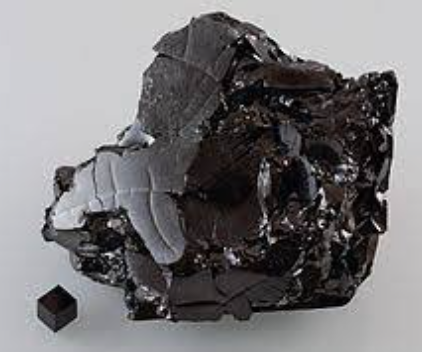
Carbon
(C), which the plant obtains from carbon dioxide present in the air

Hydrogen
(H) which the plant obtains by cleavage from water

Oxygen
(O), which also comes from the air

Mineral substances
(nutrients) whose main source is soil and fertilizers supplied to the soil.
In addition to plant nutrients, other chemical elements that are present in the environment are also taken in. However, plants do not need them for their life.
2. The role of nutrients in plant life
Each nutrient has specific functions in plants that cannot be replaced by other nutrients. They are either the „building blocks“ of organic substances (carbohydrates or sugars, lipids or fats and nitrogenous substances, especially proteins), or they are necessary for the chemical processes in which these organic substances are formed.
The functions of nutrients in plants are not only complex and diverse, but also numerous and often differently different in different species. Therefore, the nutrient requirements of different garden crops are different.
3. Basic functions of plant nutrients
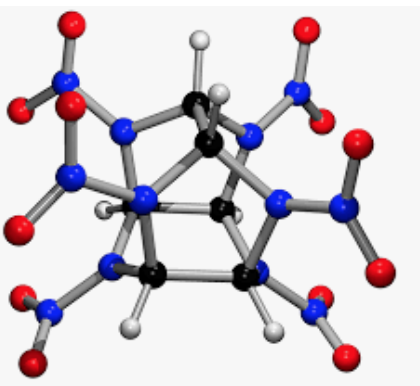
Carbon (C), oxygen (O) and hydrogen (H)
they are needed to create all organic components of the plant body. They are part of carbohydrates, fats, proteins, fiber, organic acids, etc.

Nitrogen (N)
is not only an essential component of proteins, but also enzymes, chlorophyll, vitamins, etc. It mainly supports the growth of shoots and the formation of green leaf mass. In protein production disorders, nitrogen accumulates in the undesirable nitrate form (nitrates).
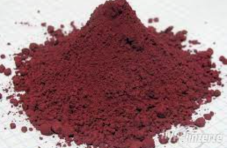
Phosphorus (P)
It is primarily part of the protein store and is essential for the accumulation, transfer and release of energy in plants. It accelerates development and maturity, increases resistance to low temperatures, supports the development of the root system and has a very positive effect on the biological value of seeds and seedlings.
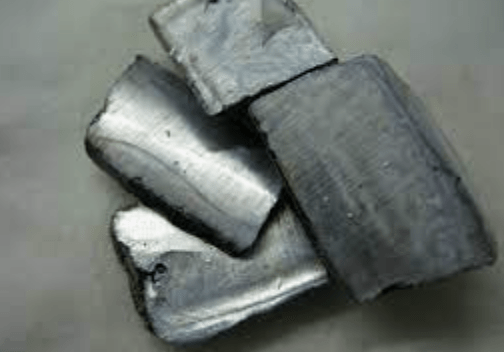
Potassium (K)
is necessary for many biochemical processes. Its strongest effect is on the water regime of plants. Increases in plant products content of sugar, starch, cellulose and some vitamins. When it's enough, they are storage losses of tuberous and pulpy fruits lower and plant resistance against disease infestation higher. It is also involved in the activation of enzymes
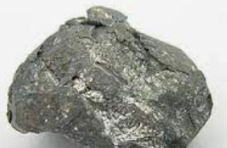
Calcium (Ca)
it has a positive effect mainly on the growth and function of the roots. Increases the preconditions for pollination of seed crops.
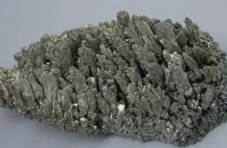
Magnesium (Mg)
is important in the conversion of light energy into chemical energy in the process of photosynthesis, and therefore an irreplaceable component of leaf green (chlorophyll). It is a building block of other organic substances and an activator of some enzymes.
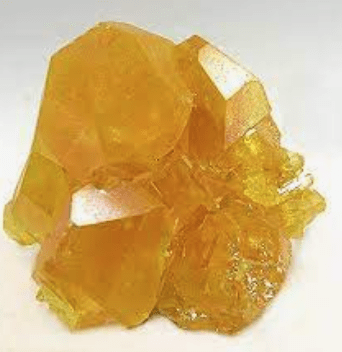
Sulfur (S)
It is part of proteins, but also vegetable oils, vitamins and enzymes.
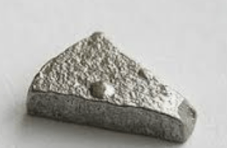
Iron (Fe)
participates in many functions, e.g. in the construction of chlorophyll, the conversion of nitrogenous substances and the formation of enzymes (which accelerate chemical reactions in plants). For example, tomato leaves contain 3.25 mg of chlorophyll when there is enough iron per gram of fresh matter, while only 0.25 mg
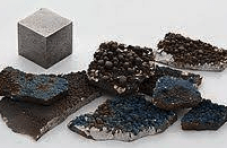
Manganese (Mn)
supports the activity of enzymes and many important reactions
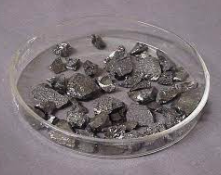
Boron (B)
promotes cell differentiation, increases seed production (by stimulating fertilization processes) and acts by moving sugar
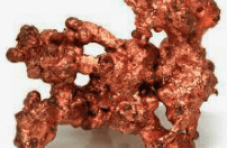
Copper (Cu)
has a significant effect on photosynthesis and in the regulation of the water regime in plants
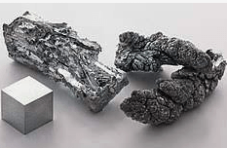
Zinc (Zn)
it is present in many enzymes and activates some others
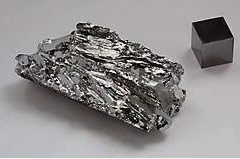
Molybdenum (Mo)
It mainly supports the activity of tuberous bacteria, which in biological crops (legumes, clover) are biologically bound and supply the plants with atmospheric nitrogen. Molybdenum also plays an important role in the reduction of nitrates (especially in spinach).
4. Intake of plant nutrients
Carbon , hydrogen and oxygen , whose source is CO2, H2O and O2, are the basic building blocks of organic matter produced in the plant and their intake
it proceeds as follows
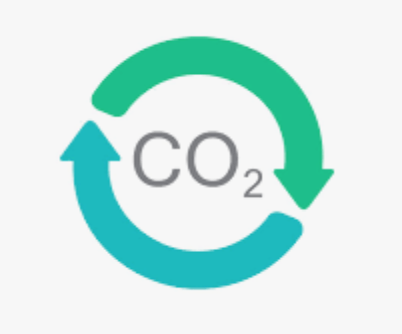
Carbon dioxide (CO2) is taken up by the plant’s leaves from the air. It comes from the respiratory activity of plants and animals, the microbiological decomposition of organic matter
and from the combustion of fossil fuels (coal, oil).
The production of CO2 in the soil (by the activities of microorganisms and the root system of plants) is more intense the higher the biological activity of the soil. This is conditioned by the way of farming the soil (especially sufficient organic fertilization and aeration of the soil). CO production from 1 ara of soil ranges from 10 to 50 g per hour. In the atmosphere of closed spaces of greenhouses, the content of carbon dioxide (CO2) can be increased by burning special briquettes or by releasing compressed CO2 in bombs (up to a concentration of 0.3%).
The intake of leaves takes place through vents (stomata), whose opening and closing mechanism is controlled not only by life processes growing, but also by light, humidity and temperature conditions. With optimal light, humidity and temperature conditions, the intake of carbon dioxide is highest.

Oxygen (O), ingested by plants from the air, is as physiologically important to their lives as carbon dioxide. He has an irreplaceable role in energy metabolism (release of energy from assimilates during respiration – dissimilation).
Oxygen is absorbed both through the vents in the leaves of the plants, but also by the roots, where it is necessary for respiration of the roots. Therefore, we take care of sufficient access of oxygen to the soil by suitable cultivation, especially of heavier, flowing soils. Lack of oxygen in the soil also causes nitrogen losses by the release of air into the air (so-called denitrification) and reduced intake of all nutrients by plant roots.
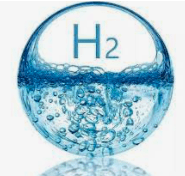
The plant obtains hydrogen (H) from the received water.
While nutrients C, O, H are involved in the formation of organic matter in plants and physiological processes in larger volumes, the remaining nutrients are found in the dry matter of plants in small concentrations (up to 12%). In summary
we call them mineral nutrients , because all these inorganic substances are also found in soil minerals.
We divide them into basic ones

Nitrogen (N)

Phosphorus (P)

Calcium (Ca)

Magnesium (Mg)
others, the most important of which are: sulfur (S), iron (Fe), chlorine (CI), sodium (Na) and trace elements: boron (B), manganese (Mn), copper (Cu), zinc (Zn), molybdenum (Mo).
Mineral nutrients are absorbed mostly by plants dissolved in water, from the so-called soil solution, by their roots. When ingesting mineral nutrients, plants have a certain ability to choose. This means that from a soil solution in which all nutrients are present in a reasonable amount, the plants receive more of those they need more. However, this only applies if the concentration of nutrients (or some nutrients) is not too high. In this case, the active mechanism of selective nutrient uptake is disrupted and the plant is forced to take in passively. The principle is that the higher the concentration of individual nutrients, the faster and in greater quantities they penetrate the plant, regardless of whether the plant needs them or not. Intensive intake of one nutrient then suppresses the intake of other nutrients. This leads to a disturbance of the balanced intake of nutrients.
Gardeners know the effects of selective nutrient intake as an effect of old soil strength and do everything in their power to make full use of their cultivated horticultural crops. They take care not only of the supply of organic fertilizers to the soil and the blunting of the acidic soil reaction by liming, but also of good soil structure and a suitable moisture and air regime of the soil. In short: they work for a permanent increase in soil fertility. This is the basic premise of the old soil power. In order for this „power“ to be used to create high and high-quality yields for garden crops, it is necessary to fertilize. Nutrient uptake by high harvests is so high that without fertilization, the soil in our garden would soon be germinated.
Nutrient uptake by some garden crops (in g per 1 m2)
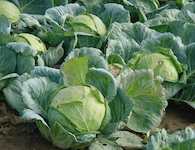
Cabbage
N: 15g
P: 2.2g
K: 18.7g
Ca:?
Mg:?
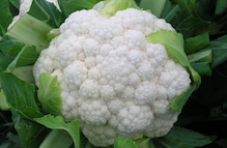
Cauliflower
N: 20g
P: 2.5g
K: 17g
Ca: 10g
Mg: 1.5 g
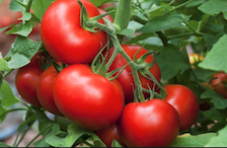
Tomato
N: 10g
P: 3.2g
K: 16g
Ca: 8g
Mg: 1.2g
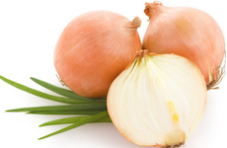
Onion
N: 9g
P: 2.1g
K: 12g
Ca: 4.5g
Mg: 1.5 g
Vetch plants (legumes and clover) have a special ability to absorb nitrogen also from the air, through the so-called tuberous bacteria that form at the roots in the soil. Their creation can be supported by the so-called vaccines. Cs. The medicine is called Rhizobin. We inoculate with it seed or soil on those plots where the species in question has either never been grown before, or a long time ago.
Plants receive, through certain nutrients dissolved in water in considerable dilution (0.2 to 0.5%). Nutrients penetrate mainly through the leaf skin and active transport by carriers through membranes to the inner space of the cell (vacuoles). This method of nutrient uptake through plant leaves is called extra-root nutrition.
In this method of nutrition, nutrients enter the plant very quickly, so they can be used immediately for the formation of organic matter. The highest degree of utilization (utilization) is achieved for those nutrients that the plant is deficient in.
The entry of nutrients into the leaves is so fast that some penetrate within a few hours. Research has shown that 50% of the nitrogen supplied is already ingested within 1 to 4 hours and 50% of magnesium or sodium within 5 hours. Slower (within 3 to 5 days) potassium, phosphorus and calcium are ingested. But even these times are significantly shorter compared to income „through the roots“.
Also, the degree of nutrient utilization „through the leaves“ is two to three times higher than through the soil. Lower air temperature and higher relative humidity contribute to fast and very good nutrient uptake through the leaves. Also after rain or when using so-called wetting agents, the surface of the nutrient leaves is more easily permeable.
5. Utilization of received nutrients
The nutrients taken up by plants are used for complex biological processes, which result in the growth and development of plants completed by the creation of desirable products. We talk professionally about the implementation of a genetic program of the relevant species and variety of garden crops. The better the nutrient intake corresponds to the demands and vegetation rhythm of the plants, the richer and better we can expect the harvest.
This ratio is specific to individual species, or varieties of crops and vary within a certain range even during the growing season. For example, for most crops, the optimal nitrogen to phosphorus ratio in younger plants is wider (more nitrogen per unit of phosphorus) than in older plants. The importance of a suitable ratio of nutrients ingested for the success of growing garden crops can be shown, for example, in the results of an experiment with tomatoes.
Influence of the ratio of nutrients received on tomato harvest
Ratio N = 100 P = 5.3 K = 49.6
Number of fruits per bush: 13.8g
Average fruit weight: 60.3g
Weight of red fruits per bush: 779g
Ratio N = 100 P = 7.4 K = 64.8
Number of fruits per bush: 16.6g
Average fruit weight: 74.2g
Weight of red fruits per bush: 1103g
Ratio N = 100 P = 10.2 K = 78.1
Number of fruits per bush: 20.3g
Average fruit weight: 76.6g
Weight of red fruits per bush: 1453g
It is very clear from the table that with insufficient intake of phosphorus (P) and potassium (K), fewer and smaller fruits were born, so that the final yield was almost half lower.
The fairly simple rule of thumb is that the success of all gardeners who have mastered the „alphabet of plant nutrition and fertilization“ is in line with their needs to absorb nutrients in a balanced ratio to provide a high and good yield.
We all know very well that to achieve success in this area requires not only mastering certain fertilization measures, but also „insight under the cover of the secrets of chemical and biological processes in soil, plants or fertilizers“, or study the literature, because optimizing plant nutrition is It is necessary to take into account not only the demands of crops and the properties of fertilizers, but also the properties of the soil, the way it is cultivated, the influence of weather and other factors, as can be seen from the following chapter dealing with the effects on nutrient intake.
6. What all affects the intake of nutrients
Not so long ago, when we thought that the intake of nutrients by the plants of our gardens is mainly affected by nutrients that we supply directly to the cultivated crop. Chemical analyzes of plants, which in recent years have also been performed on garden crops, have corrected our earlier ideas. For example, carrots fertilized with 9.0 g of nitrogen, 1.8 g of phosphorus and 10.0 g of potassium removed far more nutrients from the soil than from the fertilizers supplied. This is due to the fact that garden soils regularly fertilized with organic and mineral fertilizers have high nutrient contents in the soil and that nutrients from the soil supply are better absorbed.
We can be convinced of the content of nutrients in the soil of our flower beds in the garden by agrochemical analysis of the soil sample taken. For example, an analysis of regularly fertilized garden soil showed that to a depth of 20 cm, 260 mg of P (phosphorus), 510 mg of K (potassium) and 116 mg of Mg (magnesium) per 1 kg of soil. In terms of grams and m2, it is 78 g P, 153 g K and 35 g Mg. This is several times more than we supply per year in fertilizers. (We consider a very high dose of phosphorus to be 5 g P, 20 gK and 3 g Mg.)
We have shown that plants draw nutrients from both fertilizers and soil resources. By fertilizing we provide nutrients to plants, but because they can receive only a part of the supplied fertilizers in the year of fertilization, the remaining part passes into the soil supply (old silos), from which these nutrients are pumped by other crops. „Therefore, we fertilize not only the plants directly, but also the soil and the subsequent crops through it.“
From organic fertilizers (manure, compost), plants can absorb about 35% nitrogen, 25% phosphorus and 45% potassium in the year of fertilization. Among industrial fertilizers, the share of nutrients received in the year of fertilization is higher, around 60% of nitrogen, 25% of phosphorus and 55% of potassium. The degree of utilization of nutrients from fertilizers depends not only on a suitably chosen fertilization procedure, but also on a number of other factors (type of crop, soil fertility, weather). Due to the different use and ability of soils to bind individual nutrients, gardeners are also switching to the application of a fertilization system, in which we fertilize mainly crops with nitrogen fertilizers, while others tend to use soil. soil strength). The results of experiments and many years of experience have shown that even in gardens this progressive method of fertilization contributes to a better use of nutrients from fertilizers to create high and good yields.
Let’s talk more about the main causes that reduce the use of nutrients from fertilizers and soil. A common cause of low nitrogen utilization from easily soluble fertilizers (saltpeter, urea or compound fertilizers) is that we use a single high dose instead of low frequent doses. From this, plants can absorb about 40% less than if we supply the same amount of nitrogen in thirds three times during the growing season. This is because large amounts of nitrogen cannot be absorbed by plants at once, and in the soil, especially the glacial form of nitrogen is poorly bound. And so, during the first heavy rain or watering, undrawn nitrogen travels to the bottom and to the detriment of us all, the sources of drinking water spoil us. Not only our, but also world standards consider drinking water to be harmless if it does not have more than 50 mg of nitrates in 1 liter of water (for infants, this criterion is significantly lower – at 15 mg). One-time high doses of nitrogen usually cause an increased content of nitrates in plants, especially vegetables, where they are also harmful to humans. Therefore, gardeners are moving to more and more fertilization of garden crops with small doses of nitrogen fertilizers during the growing season.
By using foliar fertilizers, we speed up the intake of nutrients, because, for example, nitrogen in the form of urea solution is 50% taken by cucumbers or tomatoes in as little as 1 to 4 hours and magnesium in apples by 20% within 1 hour.
Soil reactions have a significant effect on nutrient intake. Most nutrients have reduced accessibility on acidic and alkaline soils. For example, phosphorus (P) reacts very significantly in the acidic soil reaction (below pH 5.0) and in the alkaline (alkaline) soil reaction (above pH 7.0), when the accessibility of this nutrient to plants decreases sharply. In contrast, the effect of fertilization with soluble forms of phosphorus (e.g. superphosphate) is low on such soils. Manganese (Mn) has the greatest accessibility in acidic soils and boron (B), on the other hand, has little accessibility only in acidic soils.
Garden crops will have the most suitable conditions for nutrient uptake if we grow them in habitats where the soil reaction will meet their requirements. If this is not the case, we must take appropriate measures, ie. blunt acidic soil reaction by liming, or reduce the alkaline soil reaction by acidification (peat, physiologically acid fertilizers). Another factor that reduces nutrient intake is drought. Due to the lack of water, plants usually suffer from a lack of all nutrients. The content of nitrogen in the dry year was 35 %, phosphorus 30% and potassium 33% lower in the dry year than in the wetter year. For individual crops, we encounter mainly a lack of phosphorus, or. boron.
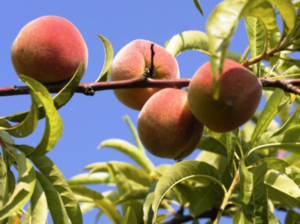
Peach
Not watered
P content in leaves = 100%
K content in leaves = 100%
Watered
P content in leaves = 157%
K content in leaves = 120%
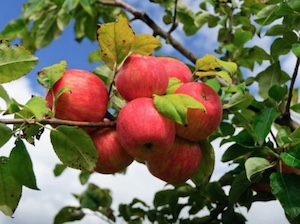
Apple tree
Not watered
P content in leaves = 100%
K content in leaves = 271%
Watered
P content in leaves = 157%
K content in leaves = 125%
Drought can be largely offset by irrigation. Fruit trees had a higher content of phosphorus (P) and potassium (K) in the leaves during watering compared to non-watered trees.
Excess water – wetting also bothers the intake of nutrients mainly due to lack of air in the soil. It is similar on foundry soils. The carapace that forms on the surface of the soil not only „suffocates“ the plants, but also limits their nutrition. Experiments with grasses have shown that e.g. in the case of defenseless, a lack of air in the root zone reduced nutrient intake by about a quarter. However, gardeners are well aware of the „fertilizing“ effect of loosening loose soil, which is always followed by an intensified intake of nutrients. In the experiment with tomatoes, the nutrient intake decreased by decreasing the partial pressure of oxygen (O2) in the nutrient solution.
Reflection of reduced O2 pressure in the nutrient solution for tomato nutrient uptake
O2 pressure reduction by 76%
O2 pressure reduction by 98%
The effect of light on nutrient intake was also studied. It has been shown that nutrient intake generally decreases with decreasing light intensity (Figure 7). Potassium intake is the least reduced. It seems to compensate to some extent for the lack of incident light. Not only water and light, but also soil temperature affect the intake of nutrients. A decrease in cold intake was observed mainly for potassium (K) but also for phosphorus (P), while the relative intake of calcium (Ca) and magnesium (Mg) increased.
As already mentioned, in soil sufficiently supplied with organic matter (humus), plants have better conditions for nutrient intake and every gardener knows that the effect of industrial fertilizers is lower on soil with insufficient organic fertilization.
It is stated that with regular organic fertilization, the intake of nutrients from industrial fertilizers is about 44% higher for nitrogen (N), 33% for phosphorus (P), 65% for potassium (K), 12% for calcium (Ca) and 45% for magnesium (Mg) compared to soil that has not been organically fertilized for a long time. Pre-crops as well as weeds also affect nutrient intake. This is often due to the unilateral depletion of some nutrients from the soil, the lack of which is then felt by succeeding or concurrent crops.
During nutrient uptake, at higher concentrations in the soil solution, there is an interaction, in which the nutrient in relative excess suppresses the intake of some other nutrients. We call this phenomenon antagonism. For example, a high concentration of potassium (with excessive application of potassium fertilizers and insufficient magnesium fertilization) suppresses magnesium intake. In an experiment with celery, an overdose of potassium fertilizer increased potassium uptake by 78 %. and while reducing magnesium intake by 18 %.
On the other hand, we can also find a favorable effect of the intake of one nutrient on the intake of others. We only call this synergism. It most often occurs during continuous nitrogen fertilization on soils well supplied with other nutrients (in the old soil strength). The so-called plant uptake capacity. It is determined by the volume and activity of the roots. It is important to note that well-nourished plants that do not suffer from a deficiency of one or more nutrients have a higher uptake capacity. This relationship has been evident since the early youth of the plants, which is why we make sure that all the nutrients are already in the seed or seedling. In other words, if we take care of the good nutritional status of the mother plant, the daughter plants will also be „armed“ for better nutrient uptake in the initial vegetation. It is interesting to note that foliar fertilizers can correct and optimize the nutritional status of plants and thus increase their intake capacity. This can also explain the unexpected increases in yield and quality improvement with the appropriate use of relatively small amounts of nutrients in these modern fertilizers.
7. Nutrient intake during vegetation
Nutrient requirements are still not the same during vegetation. When germinating, plant seeds need a lot of water, but no nutrients. They obtain them from stocks in seeds or tubers. Young plants have high demands on nutrients. They intensively accept and use them for growth. At a time when the growth of the leaf area is culminating and reserve organs (seeds, bulbs, etc.) are beginning to form, the plants also have high demands on nutrients, but to a large extent already specified. Nitrogen is absorbed in large quantities during the production of proteins, especially during the development of the leaf area. The need for phosphorus peaks at the beginning of the development of the root system and at the beginning of the formation of fruits and seeds. Potassium requirements are greatest when the carbohydrates needed for leaf mass development are formed and later when they are used to form reserve substances.
In the final phase of growth, the intensity of nutrient intake ceases, partly even with the fall of leaves or the excretion of roots into the soil, the content of nutrients in plants decreases. This is especially significant for perennial crops, where a significant part of the nutrients migrate to the reserve organs.
The relative intensity of nutrient intake (N, P, K) in early potatoes and late cabbage shows that early potatoes received only a small percentage of total intake in April, while the largest share of nutrients was taken from May to June. For late cabbage, a low percentage of nutrients was taken up in May, the highest for nitrogen (N) from August to November and for phosphorus (P) and potassium (K) from September to October. It is also necessary to adapt the fertilization to this, not to fertilize young plants and not to let adult plants starve.
The intake of nutrients in connection with the formation of dry matter of plant matter is reflected in the so-called nutrient concentration or percentage of nutrients in the dry matter. Due to the fact that the intensity of nutrient intake precedes the intensity of dry matter formation during vegetation, there is a decrease in the concentration of nutrients in the dry matter of plants. We call this phenomenon the „dilution effect“. The table shows as an example the decrease in the concentration of nutrients in the above-ground mass of cucumbers in the later stage of vegetation compared to the earlier stage.
Time intake of nutrients in early potatoes in different months
Nitrogen (N) = 3%
Phosphorus (P) = 7%
Potassium (K) = 7%
Nitrogen (N) = 23%
Phosphorus (P) = 27%
Potassium (K) = 35%
Nitrogen (N) = 100%
Phosphorus (P) = 100%
Potassium (K) = 100%
Time intake of nutrients in late cabbage
Nitrogen (N) = 10%
Phosphorus (P) = 6%
Potassium (K) = 9%
Nitrogen (N) = 35%
Phosphorus (P) = 20%
Potassium (K) = 20%
Nitrogen (N) = 60%
Phosphorus (P) = 38%
Potassium (K) = 40%
Nitrogen (N) = 80%
Phosphorus (P) = 60%
Potassium (K) = 60%
Nitrogen (N) = 90%
Phosphorus (P) = 90%
Potassium (K) = 90%
Nitrogen (N) = 95%
Phosphorus (P) = 100%
Potassium (K) = 100%
Nitrogen (N) = 100%
Phosphorus (P) = 95%
Potassium (K) = 95%
8. Percentage of nutrients in garden plants
The concentration of nutrients in plants (their percentage in dry matter) is very different. It depends not only on the type of plant and the vegetation phase, but also on parts of the plants and the nutritional conditions.
The leaves have the most nitrogen (N) and potassium (K), most often from 1 to 5 %. The contents of calcium (Ca), magnesium (Mg), phosphorus (P), sulfur (S) and chlorine (CI) are lower. They usually range from 0.1 to 2 %. Iron (Fe) and trace elements manganese (Mn), zinc (Zn), copper (Cu) and boron (B) are present in small amounts, from 5 to 200 ppm (ppm = one millionth or mg per 1 kg). Molybdenum (Mo) is present in the smallest amount from 0.2 to 5 ppm.
Young leaves tend to have a high concentration of most nutrients. In contrast, older leaves often have higher contents of low-nutrient nutrients, e.g. calcium (Ca), copper (Cu) or boron (B). For example, the youngest leaves in tomatoes had only 0.7% Ca in dry matter, while the oldest leaves had 4.7% Ca, i.e. almost seven times. This is confirmed by data obtained with vines, where the percentage of Mg was higher in older plants.
Influence of vine leaf age on nutrient content in leaf dry matter
% N
The youngest leaf = 5.03
Oldest sheet = 2
% P
The youngest leaf = 1.60
Oldest leaf = 0.67
% Ca
The youngest leaf = 0.05
Oldest sheet = 0.60
% Mg
The youngest leaf = 0.17
Oldest leaf = 0.28
While in the roots we find low contents of nutrients in general, in the seeds mainly nitrogen, phosphorus and magnesium accumulate.
Some types of crops are characterized by higher demands on nutrients, and therefore we find higher contents in them, such as legumes, which have relatively more calcium (Ca), magnesium (Mg), boron (B) but little sulfur (S) in the dry matter. Chestnuts contain relatively a lot of sulfur. Salting-tolerant plants have more sodium (Na), magnesium (Mg) and chlorine (CI) in addition to sulfur. Plants that grow well on acidic soils have relatively higher concentrations of iron (Fe), manganese (Mn) and aluminum (AI).
Medium concentration of nutrients of the main types of garden crops
working on it….
9. Amount of nutrients depleted by garden plants
An exhaustive answer to the question of how many nutrients the cultivated plants deplete would be very extensive, because:
a) there are many garden crops and each of them (but also of individual varieties) has different demands;
(b) the conditions under which horticultural crops are grown are very diverse, from sandy to clayey soils in warm, drier lowland areas to cold, wetter foothills;
c) fertilization, and thus the nutritional status, is not always optimal, so that there is sometimes a luxurious consumption of certain nutrients;
However, optimal nutrient uptake is an important guide for fertilization, and therefore we find sufficient data in the literature on which the recommended doses of fertilizers are based in professional manuals for nutrition of garden crops.
To illustrate, at a yield of 5 kg of cauliflower per 1 m2, a medium of 20 g N, 3.5 g P, 21 g K, 4.6 g Ca and 0.5 g Mg is pumped out, while red cabbage takes 30 g at the same yield. g N, 3.7 g P, 29 g K, 25 g Ca and 4.2 g Mg. However, there are also some crops that take far less nutrients from m2 at medium yields. For example, 0.4 kg of asparagus removes only moderately 8 g of N, 1.8 g of P, 8.4 g of K, 3.9 g of Ca and 0.9 g of Mg.
Of course, it also depends on the method of cultivation. Cucumbers grown in a greenhouse at a harvest of 25 kg per m2 draw an average of 45 g N, 11 g P, 58 g K, 17 g Ca and 6 g Mg. In a free bed with a yield of 4 kg per m2, cucumbers consume only 15 g N, 4 g P, 21 g K, 43 g Ca and 15 g Mg.
At the so-called nutrient balance, that is, considering how many nutrients we need to supplement with fertilization, we must take into account that from the harvest part of the nutrients (in waste non-consumable parts of plants) is returned via compost to the garden. We must also include the supply of nutrients in the soil in the calculations. If it is insufficient, we must increase the need for nutrients, if it is excessive, then we will save some nutrients.


